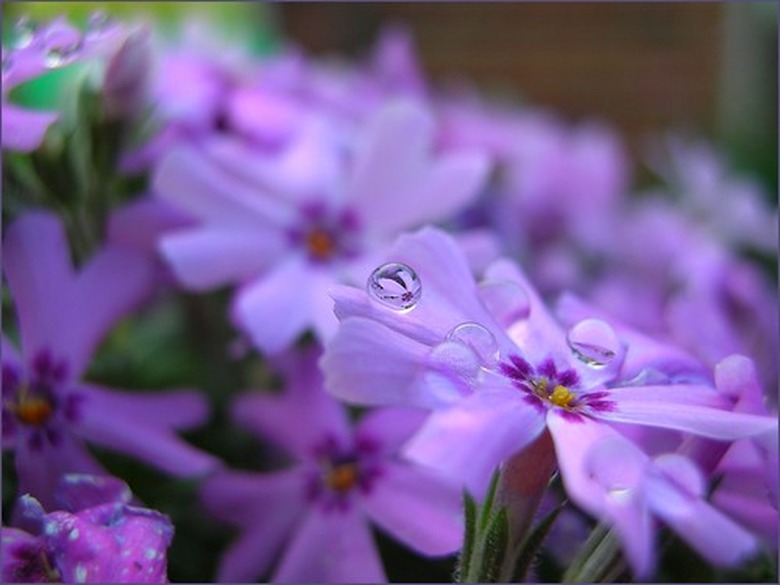Phlox Disease
Phlox diseases can quickly result in the destruction of your beautiful flowering phlox. Fortunately, most types of phlox disease can be prevented or cured if you spot the symptoms in time. Careful monitoring of your phlox plants will help you determine if there is a problem and the most effective way to deal with it.
Types
There are three main types of phlox disease. Oedema is a root function problem. Parasitic nematodes (roundworms) are an infection that the plant gets from invasion by roundworms, and powdery mildew is exactly what the name implies: a mildew growth on the plant itself that can kill the phlox if left untreated.
Identification
Oedema manifests itself in the form of rusty blisters on leaves and petals. Parasitic nematodes (roundworms) cause foliage and stems to become brown and mottled. Powdery mildew creates a dusty white covering on plant leaves, stems and flowers.
- Phlox diseases can quickly result in the destruction of your beautiful flowering phlox.
- Fortunately, most types of phlox disease can be prevented or cured if you spot the symptoms in time.
Function
Oedema is caused when the phlox's roots take up too much water for the plant to use. This creates blisters when the plant's cells literally overinflate or even burst. Nematode infections create problems when the worms feed on the leaves, roots, flowers or all three of the phlox, slowly killing the plant. Powdery mildew infestations start with some mildew spores growing on the phlox plant. As the mildew reproduces, more spores spread all over the plant and the other plants in your garden or yard.
Prevention/Solution
Each type of phlox disease has a different type of "cure." Powdery mildew is best treated with a wettable sulfur spray every 2 weeks. Once nematodes have infected a plant, they are extremely hard to get rid of, and you may have to replace the plant and the surrounding soil in the general area in order to prevent them from taking over your entire garden. Using an organic mulch can encourage nematode predators to help you with the situation. Oedema is nearly always a symptom of overwatering, not enough ventilation or both. Space your plants farther apart (at least a foot) and make sure that they get plenty of sun. Keep the soil on the dry side, watering when the leaves start to curl slightly but are not yet discolored.
- Oedema is caused when the phlox's roots take up too much water for the plant to use.
Considerations
There are pesticides that will treat nematode infections, but they are highly toxic and are not even legal for use in some areas. If you decide to treat your nematodes with a pesticide, then make sure that you can do so legally in your region and that you will not kill your phlox in the process.
